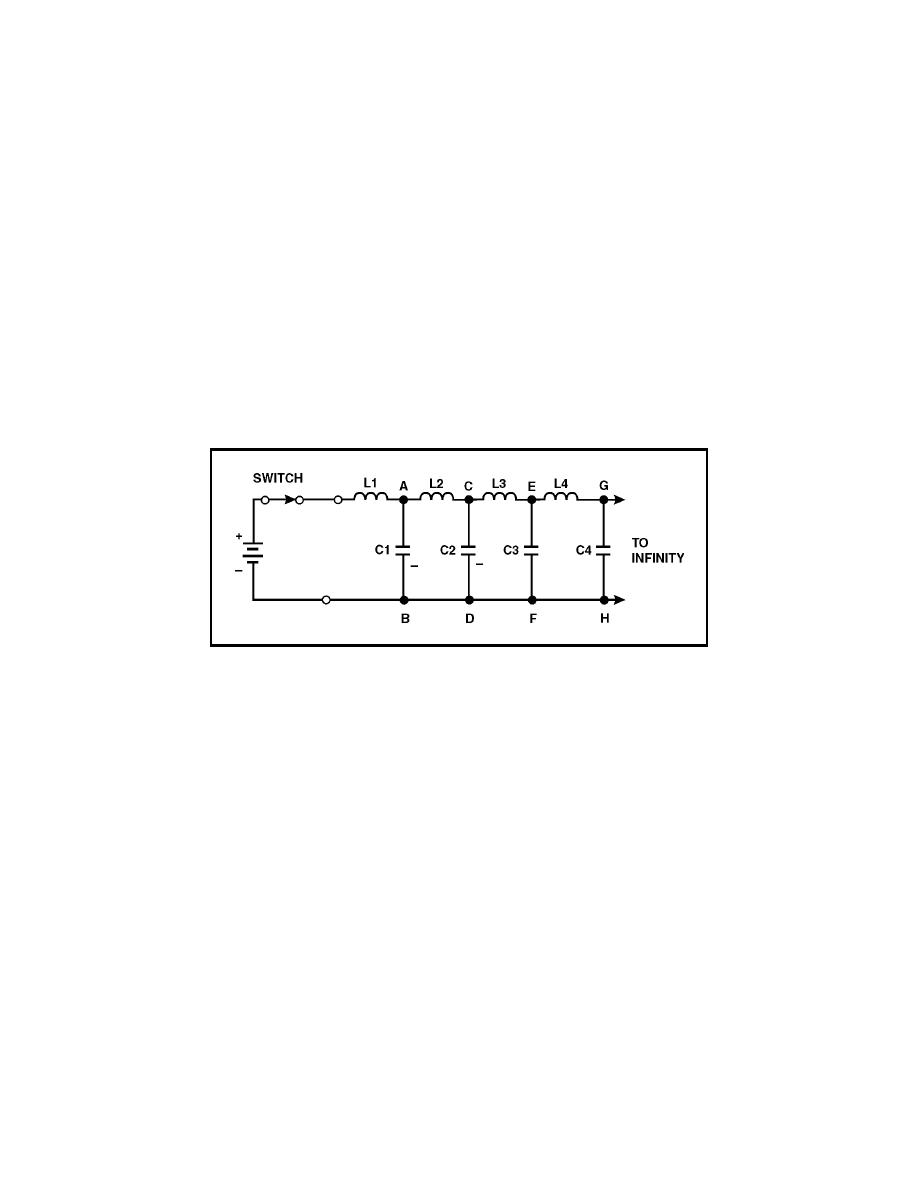
___________________________________________________ Principles of Transmission Lines
3-64. In this illustration the conventional lines of force represent the electric
fields. For simplicity, the magnetic fields are not shown. Points of charge are
indicated by plus (+) and minus (-) signs, the larger signs indicating points of
higher amplitude of both voltage and current. Short arrows indicate direction
of current (electron flow). The waveform drawn below the transmission line
represents the voltage (E) and current (I) waves. The line is assumed to be
infinite in length so there is no reflection. Thus, traveling sinusoidal voltage
and current waves continually travel in phase from the generator toward the
load, or far end of the line. Waves traveling from the generator to the load are
called incident waves. Waves traveling from the load back to the generator
are called reflected waves and are explained later in this chapter.
DC Applied to an Infinite Line
3-65. Figure 3-20 shows a battery connected to a circuit that is the equivalent
of a transmission line. In this line, the series resistance and shunt
conductance are not shown. Also, in the discussion that follows, the line is
considered to have no losses.
Figure 3-20. DC Applied to an Equivalent Transmission Line
3-66. As the switch shown in figure 3-20 is closed, the battery voltage is
applied to the input terminals of the line. Now, C1 has no charge and
appears, effectively, as a short circuit across points A and B. The full battery
voltage appears across inductor L1. Inductor L1 opposes the change of
current (0 now) and limits the rate of charge of C1.
3-67. Capacitor C2 cannot begin to charge until after C1 has charged. No
current can flow beyond points A and B until C1 has acquired some charge.
As the voltage across C1 increases, current through L2 and C2 charges C2.
This action continues down the line and charges each capacitor, in turn, to
the battery voltage. Thus, a voltage wave is traveling along the line. Beyond
the wavefront, the line is uncharged. Because the line is infinitely long, there
will always be more capacitors to be charged, and current will not stop
flowing. Thus, current will flow indefinitely in the line.
3-68. Notice that current flows to charge the capacitors along the line. The
flow of current is not advanced along the line until a voltage is developed
across each preceding capacitor. In this manner voltage and current move
down the line together in phase.
3-21



 Previous Page
Previous Page
